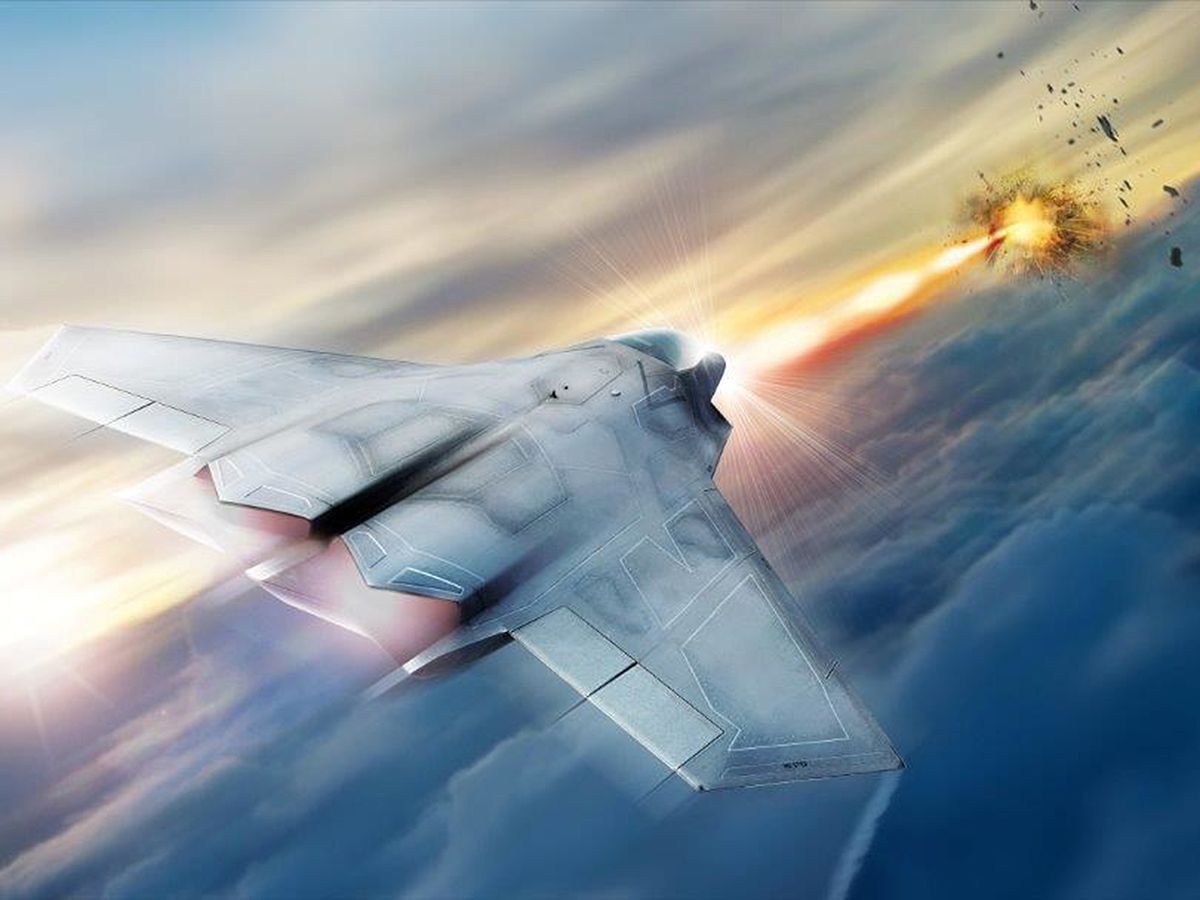Nothing says futuristic ‘top gun’ like a fighter jet using a high-energy laser to blast enemy missiles out of the sky. That future may be only a few years away. The Air Force Research Laboratory (AFRL) has issued a $26.3-million contract to Lockheed Martin to design, develop, and build a high-energy laser for tests in a tactical fighter jet by 2021. The key technology is an advanced version of a multi-kilowatt fiber laser like the one the Navy tested earlier on the USS Ponce.
Fiber lasers started as a dark horse in the development of electrically-powered laser weapons that culminated in a demonstration of a 100-kilowatt laboratory laser by Northrop-Grumman in 2009. Multi-kilowatt fiber lasers were already in use in industrial machining, but conventional wisdom said that fiber laser output was limited because optical power was concentrated inside the fiber’s tiny light-guiding core. Though that setup maximized how efficiently a fiber laser could convert electrical energy into light and gave good beam quality, it also raised the power density so high that a single fiber couldn’t emit much more than about 10 kilowatts without self-destructing.
At the time, it seemed impractical to combine beams from many fiber lasers; in doing so, you’d sacrifice the beam quality needed to focus power on distant targets. What changed the picture was the development of a high-power version of the wavelength-division multiplexing (WDM) technique used in high-capacity fiber-optic telecommunications. At low power, WDM can merge the outputs of 100 different lasers, each operating in its own narrow slice of the spectrum, into a single fiber core without causing interference. Lockheed has extended what it calls “spectral beam combining” to high-power fiber lasers, starting with a 30-kW system that combines light from about 100 lasers and uses less than half the power of other electric lasers. This year, Lockheed delivered a 60-kilowatt version to the Army for testing in a military tractor-trailer.
The AFRL contract is part of its Self-protect High Energy Laser Demonstrator, or SHiELD, program The aim is to test capabilities of a fighter jet that uses lasers to defend itself against missiles launched from the air or ground. Separately, Northrop-Grumman is building a beam control system to fire at targets, and Boeing is integrating the laser into an external pod that will contain it in flight, power it, cool it, and coordinate its actions with the aircraft’s systems.
Meanwhile AFRL and DARPA are also planning airborne tests of a competing, non-fiber laser system. The compact and lightweight electric laser, called HELLADS, was developed by General Atomics.
Cost has long been an issue with laser weapons, but fiber lasers should be affordable because they leverage a very large technology base for fiber-optic communications and industrial lasers, says Rob Afzal, senior fellow of laser weapon systems at Lockheed. “We have to manage weight both for what the pod can accept and for things like the center of gravity,” says Afzal. But he adds, “fitting it into a tight, compact space is the bigger challenge,” as well as ruggedizing the laser to withstand the vibration, temperatures, and G forces encountered in a tactical aircraft.”
Jeff Hecht writes about lasers, optics, fiber optics, electronics, and communications. Trained in engineering and a life senior member of IEEE, he enjoys figuring out how laser, optical, and electronic systems work and explaining their applications and challenges. At the moment, he’s exploring the challenges of integrating lidars, cameras, and other sensing systems with artificial intelligence in self-driving cars. He has chronicled the histories of laser weapons and fiber-optic communications and written tutorial books on lasers and fiber optics.



